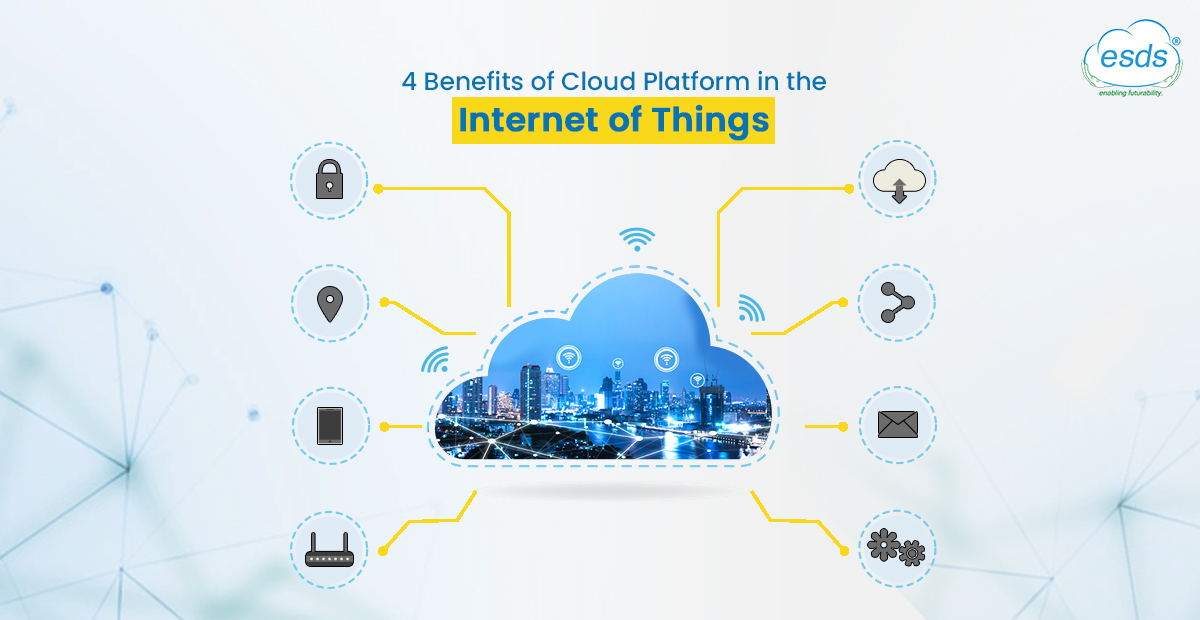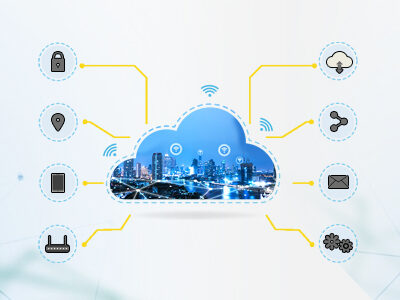4 Benefits of Cloud Platform in the Internet of Things
What if I tell you the Internet of Things (IoT) alone does not offer many benefits? Yes, that is true to some extent. IoT is a network of billions of physical devices having processing ability, and are embedded with sensors and software. These devices collect and share a massive amount of data per second over the internet. This raw data when analyzed interprets meaningful information useful for smart decision making.

As per IDC, by 2025 there will be 41.6 billion connected IoT devices that will generate 79.4 zettabytes (ZB) of data. Storing, processing, and managing the flow of such a vast amount of data is a complex task for businesses. In such a case, the Cloud platform acts as a catalyst by providing storage space and cloud computing allows the analysis, processing, and managing of the data enabling IoT systems to work more efficiently.

4 Major Benefits of Cloud Platform in the Internet of Things

Cloud platforms and cloud computing can bring ease to your business operations and drive its growth. Here are 4 major benefits when you switch to a cloud platform:
Scalability
One of the biggest benefits of deploying IoT systems in a cloud is scalability. Think of a situation where your organization needs to upscale the network infrastructure for IoT deployment. In the case of on-premise network infrastructure, such deployments require purchasing hardware, setting up the configuration, and a lot of investment of time and money. Additionally, on-premise network infrastructure requires heavy maintenance. Cloud computing simplifies this tedious process as it allows enterprises to scale up their infrastructure by assigning more cloud space and expanding storage without any additional setup. This not only accelerates the development process but minimizes the development costs. Similarly, IoT cloud platforms services are flexible in terms of scaling down the IoT-enabled devices.
Data Mobility
When the data is stored and processed on a cloud server, it is not restricted to the infrastructure constraints and can be accessed from any part of the world. IoT currently is delivering data services for a lot of devices such as smart factories, self-driven cars, sensor networks, smart cards, smartphones, smart-watches, etc. Most of these devices are already portable or are evolving towards mobility. Also, all these IoT systems require the management of connected devices in real-time. While data saved on on-premise servers can only be accessed within the business premises, an IoT cloud-based service will allow you to manage, process, analyze, and update the data as well as devices remotely and in real-time.
Data Security and Reliability
In the current data-centric world, data security is of prime importance to businesses. The security and durability of the data have always been a major concern for IoT industries since the beginning. Companies have always been in a dilemma if, even the best IoT cloud providers can provide data security and reliability as on-premise infrastructure. Another major concern for enterprises is the availability to access the data on demand. Though on-prise may seem better at first, cloud IoT services are better in this regard.
Most cloud service providers employ extreme security measures that are above the affordability of businesses. Also, the tendency of humans to consider physically closer things as safer doesn’t apply to the realm of cybersecurity. Your data is more secured when you can monitor who is able to view and use it. Hence, it is vulnerable to on-premise infrastructure. A malicious actor cannot exploit data stored on the cloud as cloud solutions provide enterprises with reliable authentication and encryption protocols.
Cost-effectiveness
The cost-effectiveness provided by the Cloud services is considerable because you pay only for things you use. Secondly, cloud storage expenses are considered as operating expenses as opposed to on-premise storage which comes under capital expenses. On-premise network infrastructure requires greater investment in terms of hardware purchase, installment, and upscaling. On top of it, the additional cost is incurred in maintenance and IT help. As in cloud platforms, the up-front cost required is eliminated, there are flexible pricing plans based on what businesses need.
Conclusion
Using Cloud as a platform has already gained momentum across all major industries. As the number of devices increases, the need for efficient device management and security increases tenfold. It is only the Cloud platform that offers key benefits to help businesses implement IoT effectively. On the other hand, it reduces the capital expenditure of the businesses due to its agile and flexible integrations at affordable costs.
It wouldn’t be an overstatement to say that the IoT cloud-based services will bring greater computing power, connectivity, and reliability in the IoT space. The transition from on-premise network infrastructure to a Cloud platform is a need of hours and in such a scenario, major tech giants provide cloud-based IoT platforms. With cloud-based IoT solutions such as ESDS’s eNlight Internet of Things platform, device connection management, secure device connection, data transfer & access control, real-time data management, and rich analytics & insights are easier than ever.

- Top 5 Data Center Trends for 2024 - October 11, 2023
- Top 15 Cloud Computing Trends 2024 - October 4, 2023
- What is Infrastructure Monitoring and Why Infrastructure Monitoring Tool is Important for Your Business? - September 20, 2023

